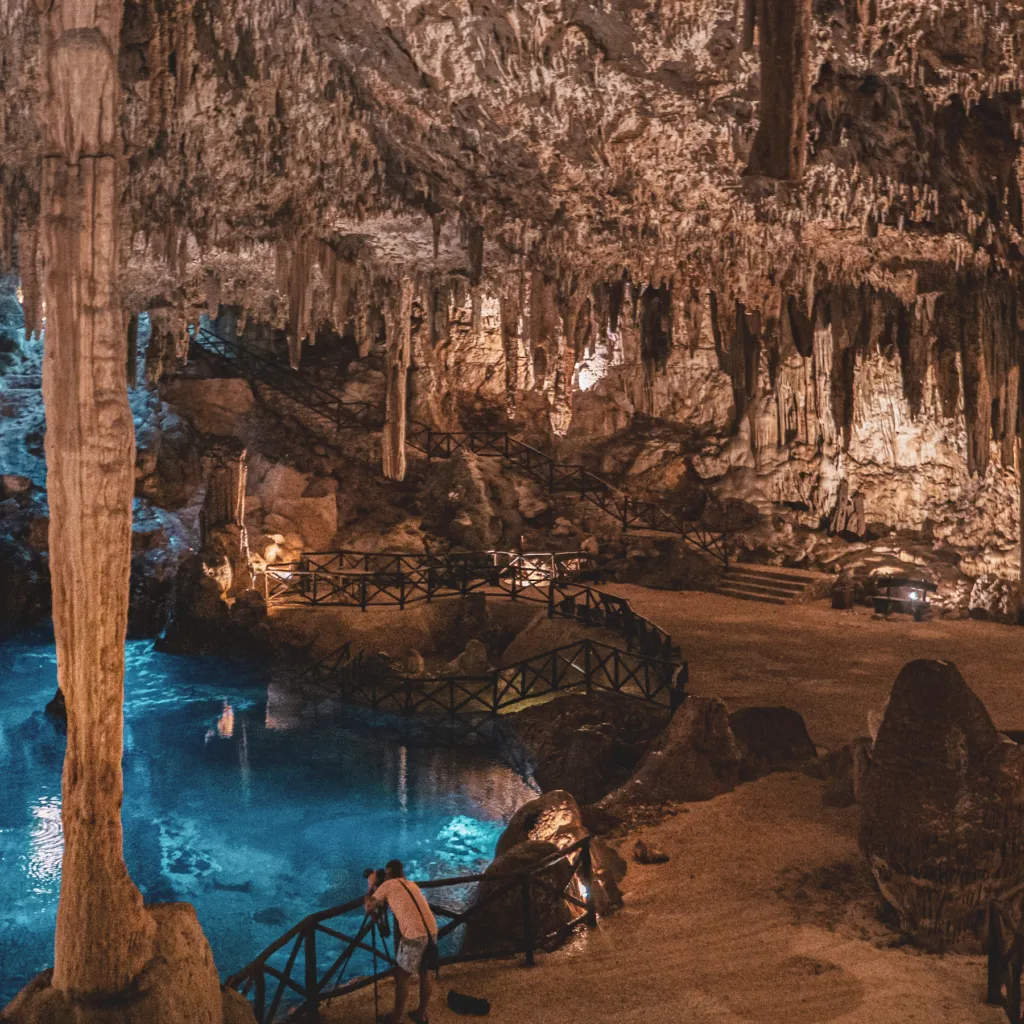At the heart of the Mayan civilization, the enigmatic sculptures known as Chac-Mool arouse the curiosity and admiration of those who contemplate them. These reclining figures, with a plate on their abdomen and a serene gaze towards the sky, have been the subject of study and interpretation by archaeologists and historians, who seek to unravel their meaning and function in Mayan culture.

The name “Chac-Mool” comes from Yucatec Mayan and means “great red jaguar.” Although its exact origin is unknown, it is believed that these sculptures represented intermediaries between the gods and humans, in charge of receiving offerings and transmitting them to the divine world.
The reclining posture of Chac-Mool, with its head turned to one side and its legs bent, suggests an attitude of receptivity and attention. The plate held on its abdomen was used to deposit offerings, such as food, drinks, incense or even human hearts, in religious rituals and important ceremonies.
Chac-Mool were carved in stone, usually basalt or limestone, and were found in prominent places within Mayan ceremonial centers, such as temples, plazas, and palaces. Their presence was a symbol of power and connection to the spiritual world, and their ritual function was fundamental in the religious life of the Mayans.
The geographical distribution of the Chac-Mool ranges from central Mexico to Central America, which demonstrates its importance in Mayan culture and its influence on other Mesoamerican civilizations.
Despite numerous studies and investigations, the origin and exact meaning of the Chac-Mool remains an enigma. Some theories suggest that they represented specific gods, such as Chaac, the god of rain, or Tlaloc, the Aztec god of water. Other hypotheses suggest that they were representations of deified ancestors or rulers.
The mystery surrounding the Chac-Mool increases their appeal and invites us to reflect on the complexity and richness of Mayan culture. These sculptures, silent witnesses of a glorious past, remind us of the importance of preserving and valuing the cultural heritage of humanity.
At Cenote Zazil Tunich, you can admire replicas of these enigmatic sculptures and learn about their symbolism and role in Mayan culture. Our expert guides will take you on a journey through history and mythology, sharing with you ancestral knowledge and the most recent interpretations of the Chac-Mool.
Visiting Zazil Tunich is a unique opportunity to connect with the rich cultural heritage of the Mayans and marvel at the beauty and mystery of these ancient sculptures.

$ 32,000
/ por persona

From: $ 25,000
/ por persona

$ 22,000
/ por persona

$ 19,000
/ por persona

$ 14,000
/ por persona

From: $ 1,799
/ por persona

Share:
Today I want to take you to a magical world full of mystery, where legends come to life and ancient tales...

Share:
Hanal Pixán, which in Mayan means ‘food of the souls’, is one of the most emblematic and profound festivities of...

Share:
The Mayan culture, rich in symbolism and tradition, has bequeathed to the world a series of ancestral practices and knowledge that...

